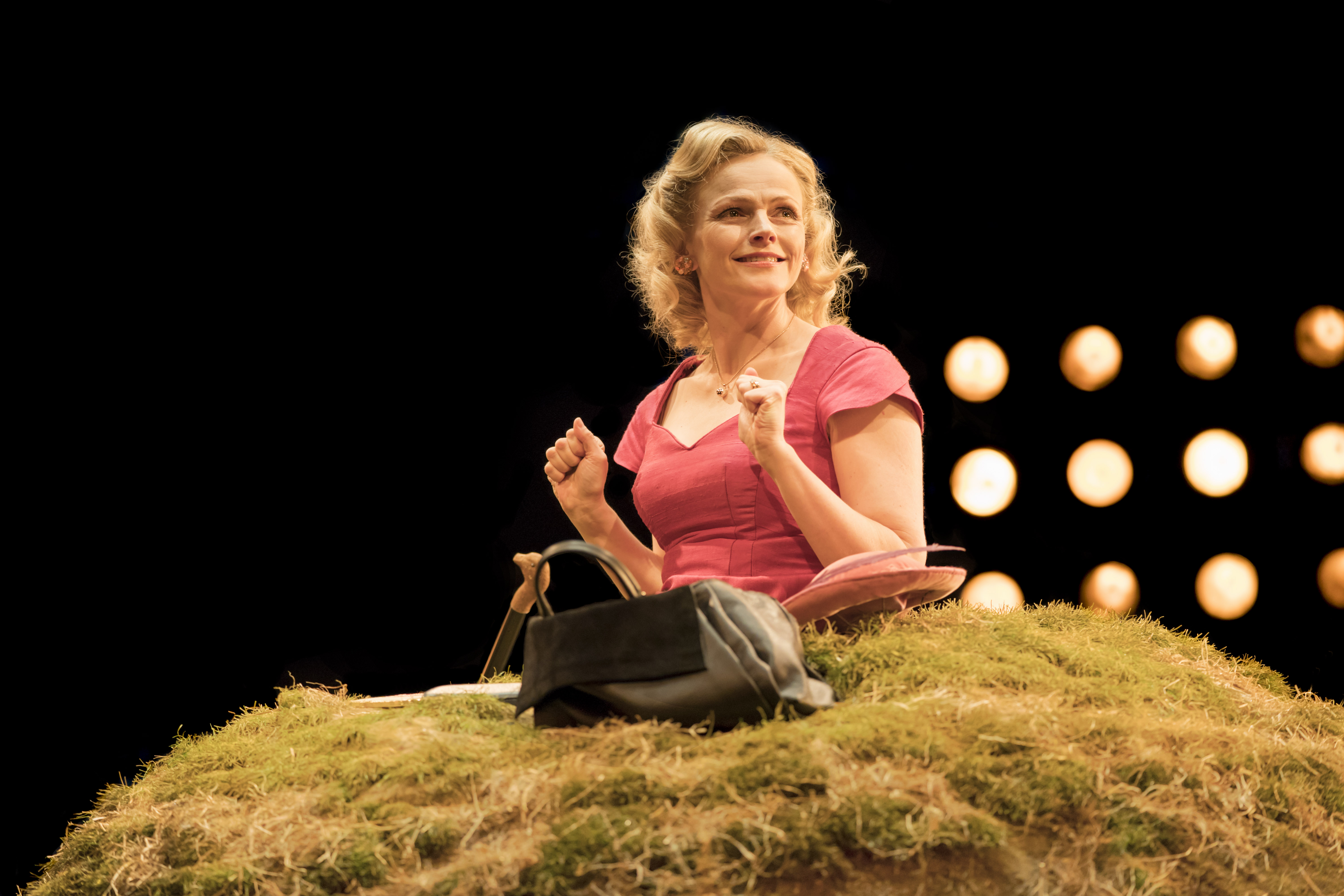Metro, June 2018
Maxine Peake is buried in a mound of earth for the entirety of Samuel Beckett’s Happy Days, her character Winnie – simultaneously terrifying and terrified – not in the least bit interested in escape. It’s the discombobulating brilliance of Beckett’s 1961 play – as much a piece of abstract art as a drama – that we never find out why she is entombed in this grassy knoll. “Was I ever loveable?,” she asks at one point, to absolutely no response from Willie, her virtually mute husband. It may be a question the audience will grapple with at the end of the show, too.
Peake – like a combination of glamorous 1950s society girl and crazed drama queen – channels some of the delicate yet ferocious mania she used to memorable effect in her Hamlet, at the same theatre four years ago. As shards of a life and marriage flash in and out of focus, Peake has a rare ability to startle and amuse, sometimes in the same sentence. Lines and thoughts arrive, seemingly laden with meaning, and then disappear into the oily water that surrounds the mound along with washed-up plastic detritus. There is the merest hint of an environmental subtext.
But then, Happy Days invites all kinds of fleeting ‘what does this all mean’ interpretations such as these, simply because there is deliberately no clear narrative of which to grab hold. Director Sarah Frankcom revels in the cumulative effect of so many Beckettian existential questions – but by the end there is a greater power in the sheer technical ability that Maxine Peake displays: for a whole hour we have been watching nothing more than her head buried in a rotating mound – and yet it is utterly compelling. Loveable though? Perhaps not.


